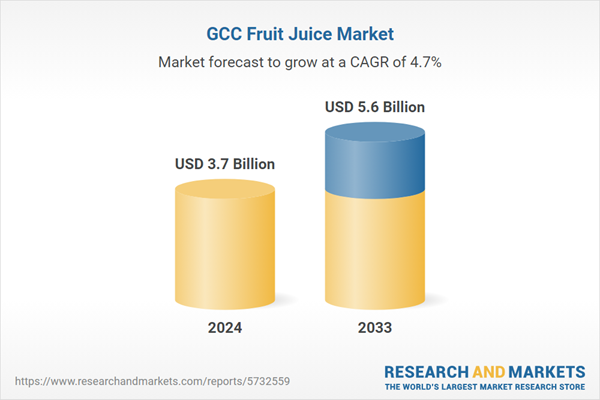This has altered the dietary patterns with increased consumption of processed and fast foods, which in turn have led to higher obesity rates among individuals. As a result, the governments in the region have started several initiatives toward promoting the consumption of healthier food and beverage options. Consequently, there has been an increase in the sales of fruit juices, which are considered a rich source of nutrients. They are also associated with various health benefits such as boosting energy, improving metabolism and reducing cholesterol.
Market Drivers:
The GCC is one of the most urbanized regions of the world, with over 75% of the population living in urban areas. This, along with the changing lifestyles, has encouraged consumers to opt for ready-to-drink (RTD) beverages, as they are easily available and convenient to consume. Apart from this, the rising health consciousness has created a shift in consumer preferences from carbonated and artificial beverages toward natural and healthier alternatives such as 100% fruit juices. Besides this, as the GCC countries have a sizable Muslim population, there is a high demand for halal food, which consists of natural, organic and ethically sourced ingredients with proven credentials.
Due to this, manufacturers are producing natural fruit juices with no preservatives, colors or artificial additives. They are also launching innovative product variants by blending different fruits and vegetables, such as beetroot orange, orange carrot, laban with mint, lemonade, mixed berries and strawberry banana, to attract consumers and increase their profitability. Moreover, the GCC region has a large and culturally diverse expatriate population, whereas around half of the total population is less than 25 years of age. Consequently, the demand for fruit juices is expected to remain high in the coming years, with the young and working population representing a key consumer base.
Key Market Segmentation:
The research provides an analysis of the key trends in each sub-segment of the GCC fruit juice market report, along with forecasts at the regional and country level from 2025-2033. Our report has categorized the market based on product type, flavor, packaging type and distribution channel.Breakup by Product Type:
- Juice Drinks
- 100% Fruit Juice
- Concentrates
- Nectars
- Powdered Juice
- Others
Breakup by Flavor:
- Orange
- Mango
- Mixed Fruit
- Apple
- Others
Breakup by Packaging Type:
- Tetra Pack
- Bottles
- Cans
- Others
Breakup by Distribution Channel:
- Supermarkets and Hypermarkets
- Convenience Stores
- Specialty Food Stores
- Online Stores
- Others
Country Insights:
- Saudi Arabia
- United Arab Emirates
- Kuwait
- Oman
- Qatar
- Bahrain
Competitive Landscape:
The competitive landscape of the market has been analyzed in the report, along with the detailed profiles of the major players operating in the industry.Key Questions Answered in This Report
- What was the size of the GCC fruit juice market in 2024?
- What is the expected growth rate of the GCC fruit juice market during 2025-2033?
- What are the key factors driving the GCC fruit juice market?
- What has been the impact of COVID-19 on the GCC fruit juice market?
- What is the breakup of the GCC fruit juice market based on the product type?
- What is the breakup of the GCC fruit juice market based on the flavor?
- What is the breakup of the GCC fruit juice market based on the packaging type?
- What is the breakup of the GCC fruit juice market based on the distribution channel?
- What are the key regions in the GCC fruit juice market?
Table of Contents
Table Information
| Report Attribute | Details |
|---|---|
| No. of Pages | 135 |
| Published | June 2025 |
| Forecast Period | 2024 - 2033 |
| Estimated Market Value ( USD | $ 3.7 Billion |
| Forecasted Market Value ( USD | $ 5.6 Billion |
| Compound Annual Growth Rate | 4.7% |
| Regions Covered | Middle East |









